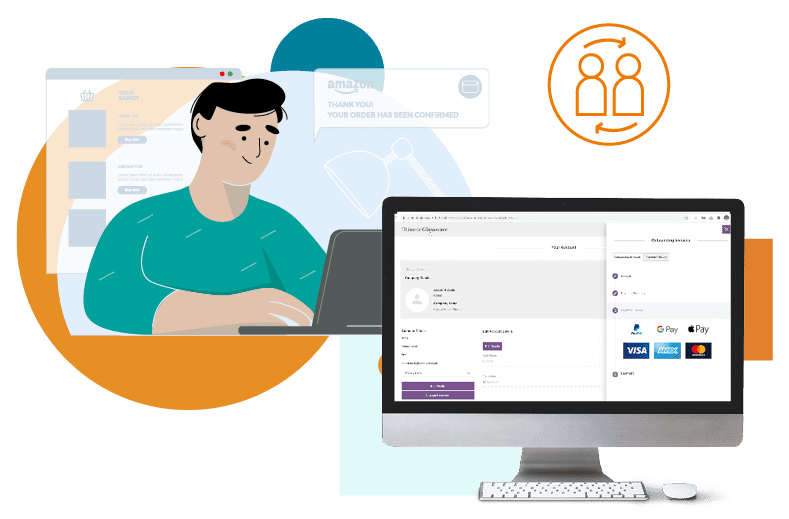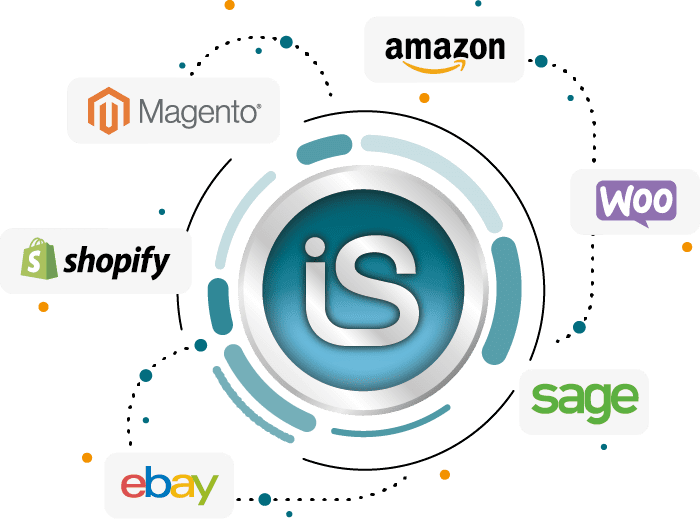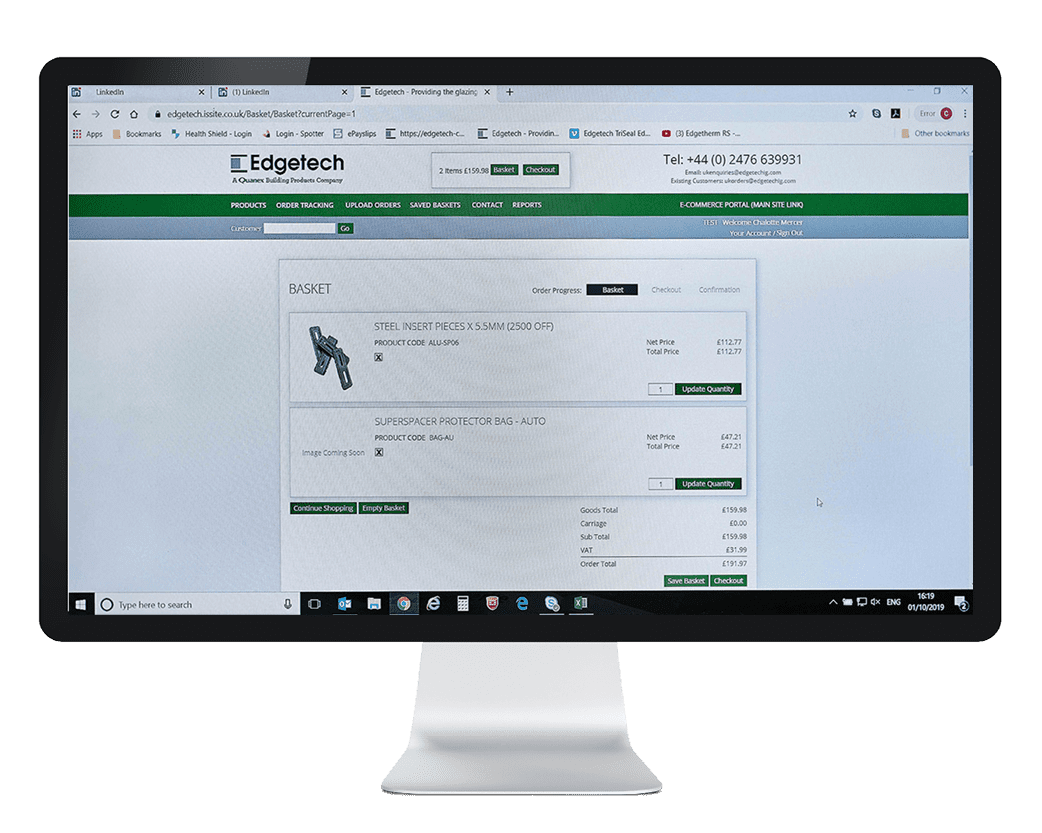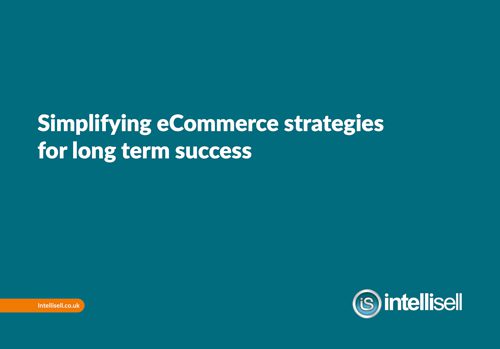Sage eCommerce for retailers
Offering your customers the flexibility to order when and how they want.


Sage eCommerce for retailers
Intellisell integrates with your existing Sage Software to give you the benefit of trading online 24/7. eCommerce allows businesses better flexibility in offering products and services to their customers that aren’t limited to your store opening hours.
So now you have an additional storefront, providing increased opportunity for sales you can incentivise more customers to shop with exclusive online promotions.
By connecting your distribution channels you can boost customer service and build brand loyalty. Customer returns are easily handled with Intellisell.
Retail capabilities…
Sage eCommerce Integration
Intellisell expands the logic from your Sage software. It gives you greater control and agility to respond to customer demand, fast.
Analysis, reporting and adjustments
Business intelligence to help you gain real-time insights into customer satisfaction, purchase behaviour and returns, to improve your overall productivity.
Warehouse, courier, 3PL and drop-shipping
Trial and launch new products and new channels quickly with Intellisell. Connect your distribution channels easily to join up your operations.
Automate processes, develop workflows
Reduce administration time and errors across your business to improve workflow and increase efficiency. Overall helping to reduce operating costs.
Marketing to get you noticed
Create an online store that stands out from the competition. Support your teams with automatic product and service advertising throughout your chosen marketplaces and channels.
Shipping and fulfilment made easy
Post-pandemic and post-Brexit the world of retail has changed, however, digital-savvy eCommerce companies continue to thrive like never before.
By connecting with partners we can support how you manage your supply and distribution chain. Act upon powerful data insights from your Sage and Intellisell solution to help you scale up your UK and global opportunities.
With the rise in click-and-collect services the customer now expects their purchases to be fast, flexible, and convenient. To succeed we can help you match your in-store experience with your online presence.

Call us on 0344 880 6140
or chat with an expert.
Want to book a consultation on eCommerce for retail?
General Contact Form
Intellisell integrates with Sage

Sage Intacct
Drive your business forward. Extend the logic of Sage Intacct with your eCommerce retail store.
Sage 200
eCommerce is just a step away to propel your business growth through your exisiting Sage 200 integration.
Sage X3
You already have software built for complex business requirements. With Intellisell bolted on the power is really in your hands.
Sage 1000
Intellisell is built for existing Sage users, integrating with your Sage 1000 solution has never been easier.
Resource Centre
Top 6 trends driving eCommerce in 2023
We are in a post-pandemic society, where consumers are in charge of 'when' but also 'how' they shop, so what does the priority look like for the year ahead? Consumers want a consistent product...
Intellisell FAQs
Anyone interested in integrating Sage solutions with their eCommerce applications, marketplaces and channels will have questions. Businesses will want to ensure that they’re connecting the right...
Intellisell’s integration with Ravensden’s Sage ERP 1000 software
Ravensden wanted to provide its customers with an alternative method of ordering that was fast and reliable, to showcase its wide product range. With such a broad range of products in Ravensden’s...
Top 6 trends driving eCommerce in 2023
We are in a post-pandemic society, where consumers are in charge of 'when' but also 'how' they shop, so what does the priority look like for the year ahead? Consumers want a consistent product...
Intellisell FAQs
Anyone interested in integrating Sage solutions with their eCommerce applications, marketplaces and channels will have questions. Businesses will want to ensure that they’re connecting the right...
FAQs
What is an eCommerce system or platform?
It is a system that enables electronic payments online. There are different ways that merchants can offer these payments. Some choose to offer fully integrated software solutions or third-party systems managed by service providers such as PayPal and WorldPay.
Many components make up an eCommerce system. These features could include; the shopping cart, integration capabilities, and security infrastructure. Each offers an important part in making sure that the system runs efficiently for both the merchant and their customers.
eCommerce integration involves implementing a shopping cart, merchant accounts, payment gateways, and security mechanisms with your website. This all helps to provide the merchant with an eCommerce system and a seamless shopping experience for the end customer.
So if we think of the software as the engine behind the scenes of an online store, then the system enables electronic payments. The software manages inventory, allows you to add or remove products, calculate the charges, order fulfilment etc.
By way of showing a friendly user interface people from non-technical backgrounds can manage the entire eCommerce operation. The back end of the interface is very multifaceted and a complex machine.
Any viable eCommerce software will enable customers to buy your products and services from your online store. Where solutions differ is the degree to which they can unify and leverage both front and back-office applications with both their unique and shared data. eCommerce platforms provide the unification of core business processes, where businesses can gain complete visibility across their company and ultimately meeting their most discerning customers’ expectations.
An eCommerce platform should allow for integrations between separate systems including; accounting, POS, inventory and order management, marketing, merchandising, customer service and financials on a cloud-based platform.
The benefits of having the software integrated allows you to provide reliable, consistent and personalised cross-channel experiences. You can offer superior customer service through a single view of all interactions and transactions across all touchpoints and channels.
You can also go above and beyond your customer expectations and increase your revenue by taking control of your orders and have one single view of what inventory you have across multiple channels and supply chains.
What are the most common types of eCommerce Software?
On-Premise: These are managed onsite by developers who take control of the manual updates and carry out any fixes that may need to be resolved. It offers merchants flexibility over hosted solutions. However, SaaS is becoming the preferred option, which you can discover more about below.
SaaS: Software as a Service (or “hosted”) solutions are much more detached from developers, in simple terms it isn’t maintained through company hard drives, you access it via the internet
The only requirements from development teams are usually for supplementary custom design features. You will be able to action any updates with one click or they happen automatically. This makes it a better choice for online merchants. It saves time for eCommerce stores using SaaS software and it’s also so much cheaper than on-premise solutions.
What is an Enterprise Resource Platform (ERP) eCommerce integration?
This is referring to the automation between the back office and the website. Automatic updates of product, price, stock and then the processing of customer and order details.
What is a payment gateway?
A payment gateway is a technology used by merchants to accept debit or credit card purchases from customers. So once you hit the buy button on a website, the payment gateway comes into action.
The next step is adding your bank card details. It is the front-end technology in charge of sending customer information to the merchant acquiring bank, for processing.
It then returns the transaction details and response from the payment network to the website you purchased from to inform them that the card is authorised, and therefore the order is completed.
In physical stores, payment gateways consist of the point of sale (POS) terminals used to accept credit card information by card or by smartphone. In recent years have begun accepting phone-based payments using QR codes or Near Field Communication (NFC) technology.
In online stores, payment gateways are the “checkout” portals used to enter credit card information or credentials for services such as PayPal.
Now that we have chip technologies, the signature phase on a credit/debit card has been replaced with a personal identification number (PIN) entered directly into the payment gateway hardware.
Contactless purchases are now so popular, and most of us now use our phones as payment devices instead of plastic credit cards.
Sign up to our newsletter for the latest Intellisell news and insights
Newsletter subscription
Get in touch to see
Intellisell in action
Accelerate your business today with an agile all in one eCommerce solution
General Contact Form
This site is protected by reCAPTCHA and the Google
Privacy Policy and Terms of Service apply.





